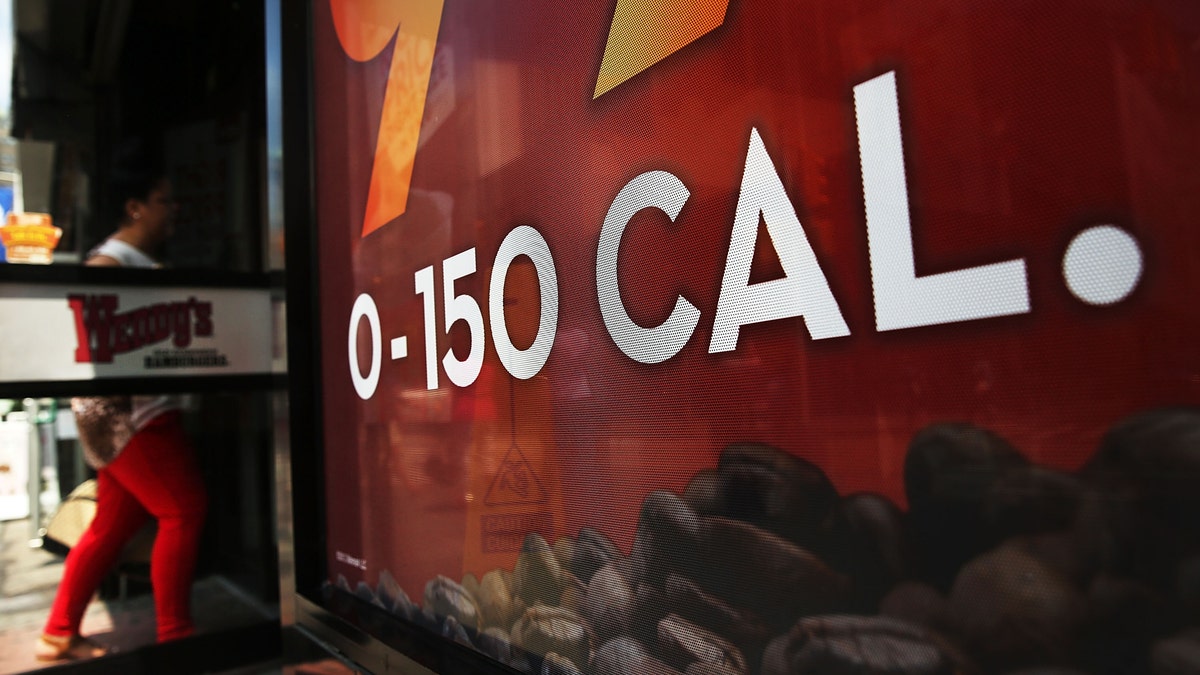
NEW YORK, NY - JUNE 11: An advertisement for a fast food restaurant states the calories of drinks in a Brooklyn neighborhood with a high rate of obesity and diabetes on June 11, 2013 in New York City. Three months after a judge struck down New York Mayor Michael Bloomberg administration's ban on large sugary drinks, lawyers for Bloomberg are trying to convince an appeals court on Tuesday to reinstate a ban. On Monday, New York City health officials declared a Ãdiabetes epidemicà in New York stating that deaths linked to the disease have reached an all-time high in the five boroughs of new York. According to the Health Department, a record 5,695 people died from diabetes and related causes in 2011. (Photo by Spencer Platt/Getty Images) (2013 Getty Images)
For years, cases diabetes in the U.S. and the world have been skyrocketing. A new report by the International Diabetes Federation in Brussels, Belgium, estimates there are 382 million people around the world living with the disease.
“The battle to protect people from diabetes and its disabling, life-threatening complications is being lost,” the IDF, which observes Nov. 14 as World Diabetes Day, said in the report. In 2035, that figure is estimated to climb to around 592 million.
Here in the U.S., the numbers are stark as well: Nearly 26 million diagnosed with diabetes, another 79 million believed to have “prediabetes” – elevated blood glucose levels that may or may not be causing diabetes-like symptoms.
The problem is particularly acute within the U.S. Hispanic population.
According to the Department of Health and Human Services’ Office of Minority Health, 3.2 million Latino adults – 13 percent of the overall Hispanic population – is living with diabetes.
“Hispanics are 1.7 times as likely have diabetes as Whites,” with Mexican-Americans even likelier to be diagnosed, according to HHS.
Furthermore, in recent years the death rate among Latinos from diabetes-related causes is 50 percent higher than that of non-Hispanic whites.
Many health professionals grow frustrated trying to mount education and outreach programs in Latino communities.Yolie Acosta, 40, the executive director of the non-profit Latino Diabetes Association in Montebello, Calif., pointed out that there may be a language barrier as well as cultural ones that need to be overcome.
“We go to different locations and venues like churches, senior centers, community centers,” Acosta told Fox News Latino. “In Huntington Park, Pico Union, South El Monte, Compton and Watts – and nobody knows their numbers.”
There is, in fact, a huge amount of false information about diabetes, starting with the fact tahat there are various types of the disease.
“About 90 percent of people diagnosed have type 2 diabetes,” Acosta said.
Type 1 diabetes is congenital, which means it’s transmitted genetically, and the person’s pancreas is incapable of producing insulin, which the body needs to absorb blood sugars. This used to be referred to as “juvenile diabetes,” although, in fact, a T1 diagnosis can be determined at any age.
People with prediabetes have a strong likelihood of developing type 2 diabetes, in which the body has a hard time producing insulin. There are a number of factors that can cause T2, among them diet, lack of exercise and genetic predisposition – which suggests why the disease affects minorities more.
And more and more kids are getting diagnosed with type 2.
“Our poor eating habits are what’s killing us,” Acosta lamented. “People don’t cook anymore. They sit at their desks and eat. And they don’t exercise. I see people bring their kids to the park to play baseball with pizzas and bags of McDonald’s.”
Follow us on twitter.com/foxnewslatino
Like us at facebook.com/foxnewslatino
